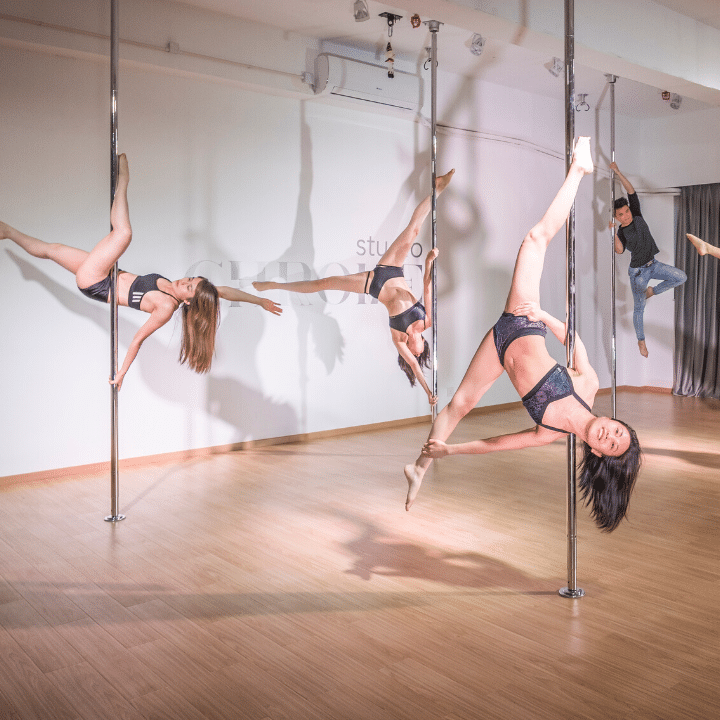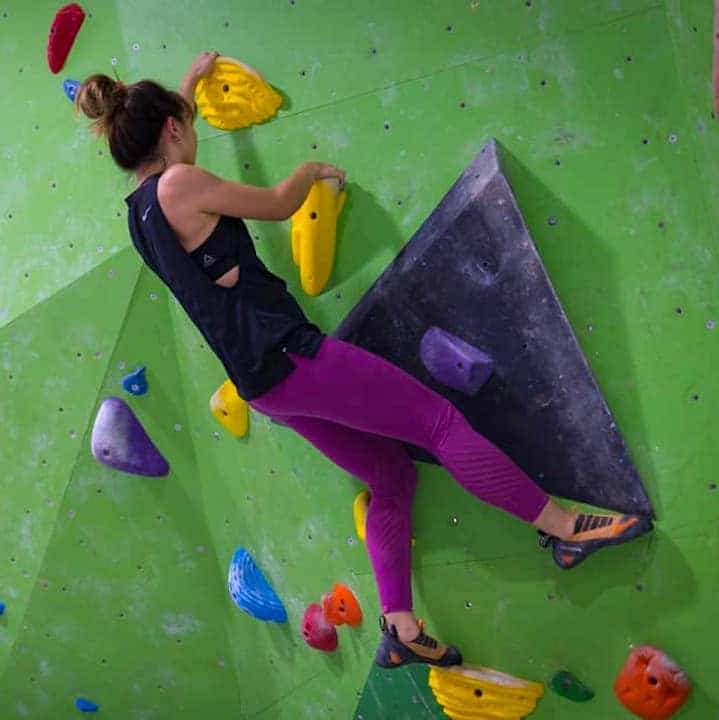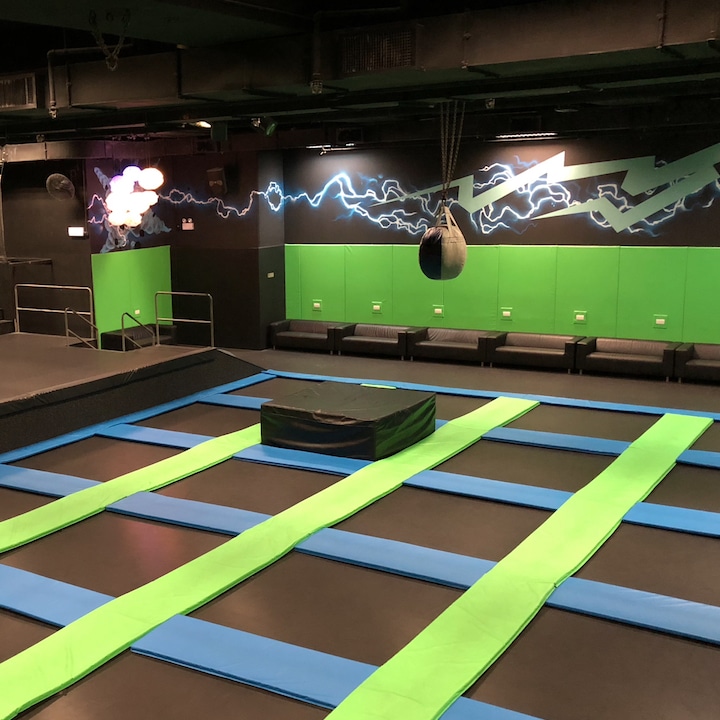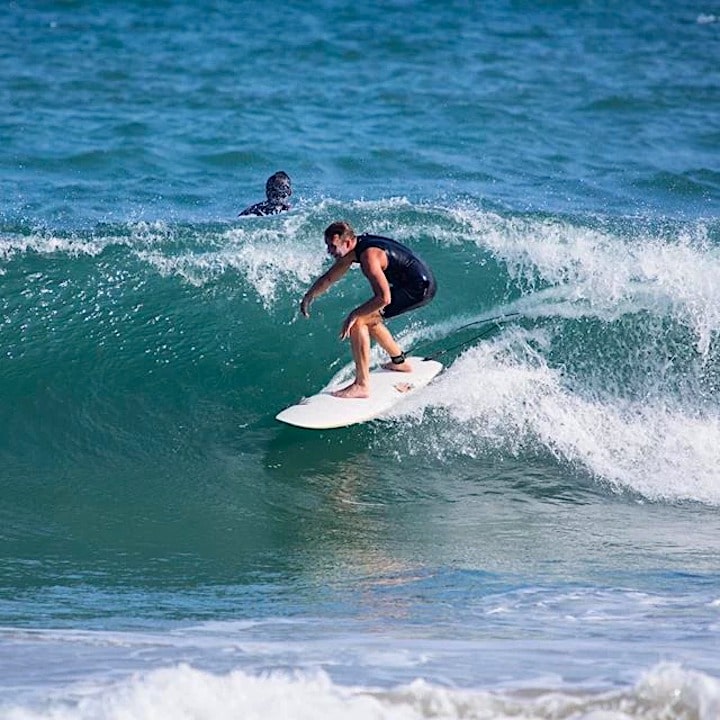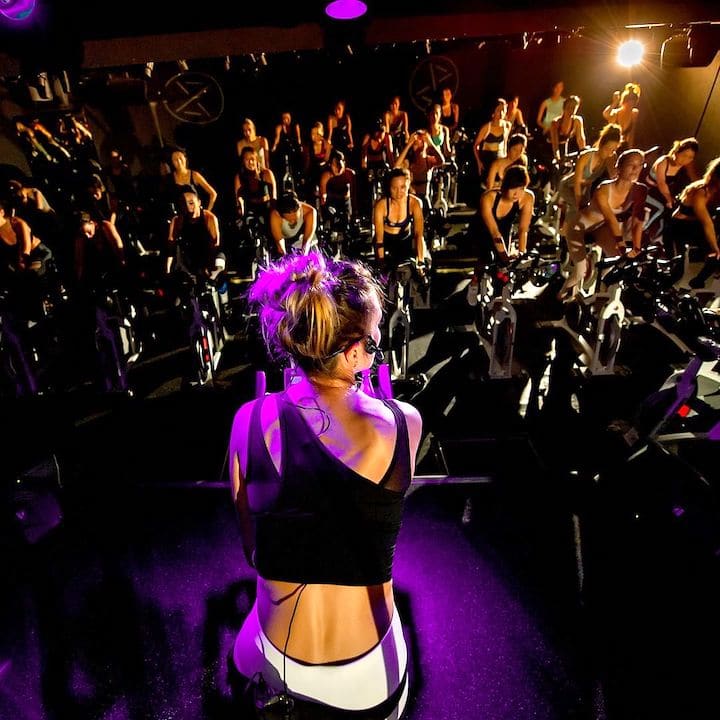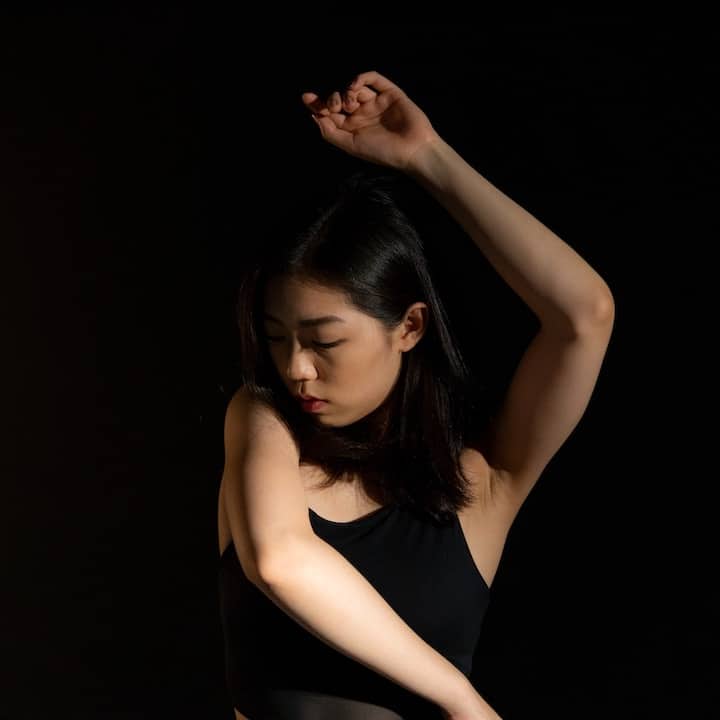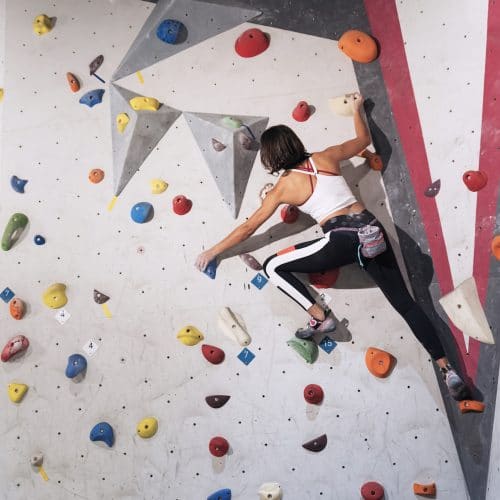There’s always pressure to keep up with health and fitness trends, with influencers plugging their brand new ebook and fitness centres meeting the demand for new, innovative classes – but what if we, umm… don’t really like working out? Not all of us find it easy to spring out of bed and go for an early morning run, or hit the gym after a hard day of work; we’re quite content streaming trashy re-runs and Deliveroo-ing Hong Kong’s best eats. So, here’s one for our “fit-ish” girls (ie. semi-fit; kind of fit; someone who likes the idea of being fit but equally likes sitting on the couch). We’ve put together a list of activities that are fun but also sneak in a workout. We’ll class that as a win!
Pole fitness and dance is increasingly sought-after for cross-training, conditioning and all-over muscle-sculpting. Whether you’re a regular gym-goer or fitness newbie, incorporating pole fitness into your weekly workout invigorates not only your arms, abs, legs and glutes, but also your mood, mindfulness and overall well-being. The sport and art form works to improve tone, posture, flexibility and coordination, and allows for a variety of options that appeal to your own personality and fitness goals.
Studio Chrome began as a labour of love by three avid polers who experienced the art form and sport’s transformational qualities in their own lives. Today, it is a premier studio that offers pole, aerial arts, movement and dance classes for enthusiasts of all ages, and is widely regarded as one of the most encouraging and supportive aerial communities in the city. Learn from world-class instructors on competition-standard equipment, and just the right dash of adrenaline, challenge, camaraderie and fun.
Where: 10E, New East Sun Industrial Building, 18 Shing Yip Street, Kwun Tong, Kowloon, Hong Kong
How much: Various prices according to time and day – you can find out more here
Calories burnt in an hour: Livestrong estimates that between 200-350 calories can be burned in an hour of pole dancing!
Studio Chrome, 94899991, [email protected], www.studiochromehk.com
Editor’s Note: This business is now permanently closed.
NASA calls rebounding the most effective exercise devised by man. If that doesn’t make you want to give it a go, we’re not sure what will! Rebounding at BounceLimit is all about having fun whilst intensifying your workout, meaning less time at the gym with super speedy results.
Since 2014, BounceLimit has been offering group fitness classes with the high intensity, low impact benefits of exercising on trampolines (also known as the “rebounder”). The studio now offers more than 10 different types of classes for all levels and focuses, including HIIT, extreme cardio, mobility and core. If it’s your first time on a rebounder (and, maybe your first time working out in a while…), we’d opt for the BeginnerBounce, but if you’re looking for a two-day-burn, BounceBodyTone or TabataBounce are guaranteed to get you results. With energetic, friendly instructors and a modern, welcoming space, BounceLimit is definitely a spot we’d recommend. We had the chance to check it out for ourselves when it first opened and it quickly became an office favourite.
Sassy Perk: As a special bonus to Sassy Readers, you can get 50% off a trial package for a friend when you purchase one for yourself. Get your trial here and simply mention the deal when purchasing to redeem for your friend.
Where: 13/F, The Pemberton, 22-26 Bonham Strand, Sheung Wan, Hong Kong
How much: Various prices according to time and day – you can find out more here
Calories burnt in an hour: It’s up for debate, but Livestrong reckons that one hour of casual bouncing can burn up to 300 calories.
BounceLimit, 2441 0021, [email protected], bouncelimit.com
Climbing hot-spot Verm City caters to experienced boulderers and newbies alike. Free-climb and check out its augmented walls where you can play games like Whack-a-Bat, or opt for the Clip ‘N Climb area (don’t be deterred by the bright colours, it’s definitely not just for kids!) and race against one another. Muscles you never knew existed will ache in the morning, trust us.
Where: Kodak House 1, 4/F, 321 Java Road, Quarry Bay, Hong Kong
How much: $250 for a rock climbing day pass, other various prices and options available – you can find out more here
Calories burnt in an hour: According to the Daily Burn, rock climbing “can burn anywhere from 500 to 900 calories per hour, provided climbers keep rest to a minimum between routes.”
www.vermcity.com
Hiking is an obvious and great outdoor activity to opt for when circuit training won’t cut it. Combine lush views with a spot of aerial yoga and you’re on to a winner. Bamboo Yoga offers a full or half-day workshop every weekend, so why not embrace the summer sun and hang over the ocean? A full-day (perfect for beginners) starts with an aerial yoga class at Yoga Sunshine in Kowloon Bay before heading out on a short hike to reach the beach.
Where: Yoga Sunshine, Room 1708, 17/F, 32 Lam Hing Street, Kowloon Bay Metro Center Phase 1, Kowloon Bay, Kowloon, Hong Kong; and Sai Wan Beach, Hong Kong
How much: $560 to $590 for an intermediate/advanced half-day workshop, $800 to $830 for a beginner’s full-day workshop – you can find out more here
Calories burnt in an hour: Shape compares 50-minutes of aerial yoga to an hour of power walking, burning an average of 320 calories per session. Not counting the hike to the beach!
www.bamboo-yoga.com
Read more: Bamboo Yoga: The Most Insta-Worthy Exercise Class In Hong Kong
These 60-minute classes are a total body workout! Combining cardio, strength and core training as well as targeting flexibility, balance and stability, get stuck in and sign up for an eight-week beginner’s course in Tamar Park. Shake your hips against the technicolour skyline and weave sparkly colours across the sky – these sessions are pretty dreamy.
Where: Hing Ying Mansion, 6/F, Apartment 42, 40-42 Bonham Road, Mid-Levels, Hong Kong
How much: $1,280 for the eight-week mixed level course – you can find out more here
Calories burnt in an hour: Health claims that “any combination of [hoop] moves for 30 minutes can burn 150 to 250 calories per workout.”
www.turningcircles-hk.com
Read more: Turning Circles: Hoop Dance In Hong Kong
Take a much-needed break from the hustle and bustle and spend an afternoon out on the water combining yoga poses with balancing on a paddle board. With a range of classes from regular yoga sessions to “meditation and yin” and fitness, you’re bound to get your recommended dose of vitamin-sea.
Where: Stanley and Sai Kung, Hong Kong
How much: $500 per person for a 90-minute group class (inclusive of board rental), $450 per person for a 90-minute private session – you can find out more here
Calories burnt in an hour: According to SUP World Mag, “with an energetic yoga flow you can burn anywhere between 416-540 calories in an hour.”
www.supyogahongkong.com
Read more: Hong Kong Meditation Centres: Studios For Every Technique
Who knew a childhood pastime could be such a workout? With floors lined with trampolines and foam pits, Ryze has built a ninja obstacle course that will work every part of your body. Hang from ropes, climb nets and accept that you won’t be able to move your arms in the morning. Ryze also dims the lights and turns on lasers every weekend from 7pm to 9pm!
Where: Kodak House 1, 3/F, 321 Java Road, Quarry Bay, Hong Kong
How much: Various prices according to time and day – you can find out more here
Calories burnt in an hour: It’s up for debate, but Livestrong reckons that one hour of casual bouncing can burn up to 300 calories.
www.ryzehongkong.com
If you’re heading to the beach with friends this weekend, save the Coronas for mid-afternoon and book in a surfing lesson before squeezing in the lime. Catch some rays and channel some serious surfer chick vibes, you’ll be feeling the burn in your legs and shoulders in no time at all.
Where: Big Wave Bay Beach, Shek O, Hong Kong
How much: $400 for a 60-minute group paddle session, $600 for a 60-minute group surf lesson, $800 for a 60-minute one-on-one surf lesson – you can find out more here
Calories burnt in an hour: Named one of the top five outdoor exercises for burning some serious cals, Men’s Fitness claim that you will burn up to 125 calories just paddling out to meet the waves.
www.hkwaterman.com
Read more: Surfing In Hong Kong With HK Waterman
You may have seen a version of this viral workout floating around the web with its colourful and immersive lures. PAVIGYM™ is a seriously cool fitness experience that utilises LED lighting, music and pressure sensitive walls and floor panels to create a unique and experiential workout that’s more like one big game than a workout.
Where: Central Studio, 2/F, World Trust Tower, 50 Stanley Street, Central, Hong Kong; TST Studio, 16/F, Cheuk Nang Centre, 9 Hillwood Road, Tsim Sha Tsui, Hong Kong
How much: $250 for a drop-in class, $880 for five classes, $1,680 for 10 classes
Calories burnt in an hour: If you go all out, a HIIT session can burn up to 500 calories in just 32 minutes according to Muscle and Fitness.
www.opstudiohk.com
Unleash your inner fighter with Lights Out Boxing Club! Lights Out’s group classes promise 45-minutes packed full of punching, moving, and lifting. Sweat along to changing playlists and lights whilst relieving yourself from the stress and frustrations of your day. Not only is boxing a great workout, but it’s also tons of fun!
Where: Sea View Estate, Block C, 3/F, 8 Watson Road, Causeway Bay, Hong Kong
How much: $150 for a trial class, $300 for a single class, other various prices and options available – you can find out more here
Calories burnt in an hour: Livestrong claims that an hour of punching the heavy bag burns around 422 calories!
www.lightsouthk.com
Read more: Self-Defence Classes For Women In Hong Kong
XYZ is the perfect place for those who want to spin but are intimidated by the serious atmospheres of traditional gyms. The studio’s neon lights and its jamming playlists (handcrafted by its spin instructors) give off a nightclub vibe, immediately setting the mood for a fun workout session.
Where: New World Tower 2, 2/F, 18 Queen’s Road Central, Central, Hong Kong
How much: $270 for a trial ride, $350 for a single ride, $800 for a 2-week trial pass, other various prices and options available – you can find out more here
Calories burnt in an hour: According to Women’s Health, spinning for an hour burns around 400-600 calories.
www.youarexyz.com
If you’re naturally an early bird, instead of going for a run or forcing yourself to follow an exercise video on YouTube, “energise and heal, one dance at a time” with First Light‘s innovative dance sessions! Happening once a month* in the early morning and alternating between pitch-dark and welcoming in a new day from Hong Kong’s rooftops, break down barriers and let loose.
Where: Varies by workshop and class – you can find out more here
How much: $150 on the door, prices vary by event – you can find out more here
Calories burnt in an hour: Cosmo reveals that “aerobic dance can burn upwards of 443 calories per hour” (even more than jogging). Perhaps we should hit Lan Kwai Fong more often…
www.facebook.com/firstlighthongkong
*First Light Hong Kong currently does not have any upcoming events but make sure to like and follow its Facebook to be the first to know when they return!
Read more: Your Guide To The Best Dance Classes In Hong Kong
Editor’s Note: This post was originally published in August 2017 by Lexi Davey. This post has most recently been updated in February 2020.



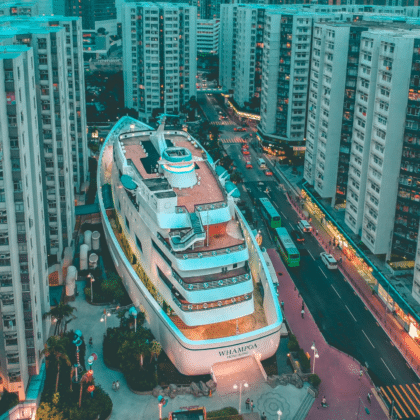

 Eat & Drink
Eat & Drink



 Travel
Travel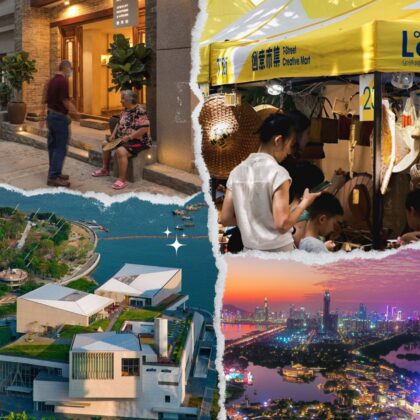

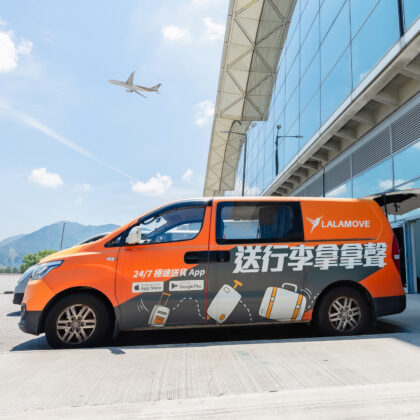

 Style
Style



 Beauty
Beauty



 Health & Wellness
Health & Wellness



 Home & Decor
Home & Decor



 Lifestyle
Lifestyle


 Weddings
Weddings


